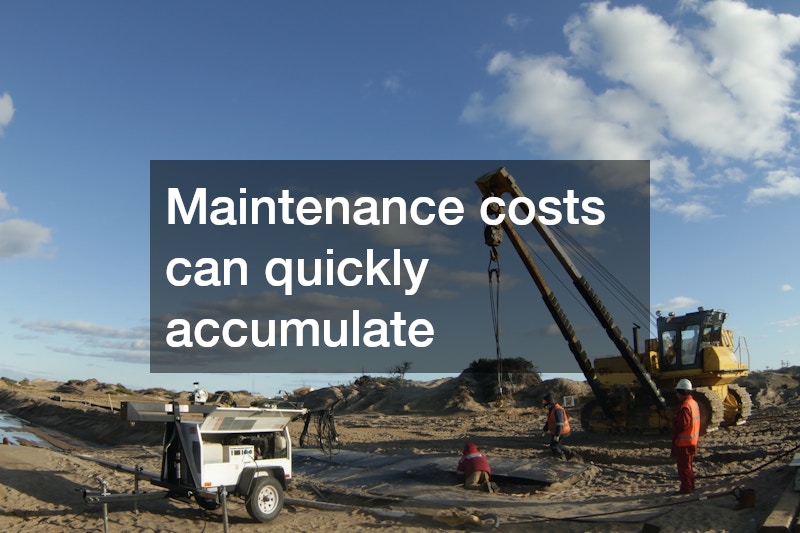The Business Case for Renting vs. Buying a Crane
Explore the factors to consider when deciding whether to rent or buy a crane for a business, including financial implications, operational needs, and long-term objectives. The crane you choose can significantly impact your projects and overall business performance, making this choice one of the pivotal factors in logistics and operational efficiency. As various industries depend on cranes for lifting, moving, and assembling materials, understanding the nuances of crane rental versus ownership becomes imperative.
What Are the Financial Implications of Renting vs. Buying a Crane?
The financial considerations of renting versus buying a crane can impact your business significantly. Initial costs are often the first factor businesses consider, as renting typically requires lower upfront expenses compared to the purchase price of a new or used crane.
Additionally, the ongoing costs associated with ownership—including insurance, depreciation, and financing—can add up quickly, making it vital to evaluate these factors against the relatively predictable costs of crane rental.
With a crane rental, you usually pay a rental fee, which can vary based on duration, type, and location of the crane. This rental fee can be easier to manage in a fluctuating market where project demands are uncertain. On the other hand, purchasing a crane means you have a fixed asset, which can either appreciate or depreciate in value over time. Understanding these dynamics is essential for making a financially sound decision that aligns with your financial strategy.
Potential return on investment (ROI) also plays a significant role in this decision. Owning a crane could yield long-term savings and efficiencies, especially for businesses with ongoing projects requiring heavy lifting. However, if your lifting needs are sporadic, the ROI of renting can far outweigh that of buying. Businesses should conduct a detailed cost-benefit analysis to determine their optimal approach depending on their unique financial situations and project requirements.
How Does Renting a Crane Affect Project Flexibility?
Flexibility in project management is vital for businesses operating in dynamic environments. A crane rental offers a remarkable degree of adaptability, especially when project demands change regularly or are inconsistent. This kind of flexibility is particularly advantageous in industries like construction or event management, where peak periods may suddenly require additional equipment. Renting allows businesses to scale their operations up or down quickly without the commitment that comes with ownership.
Renting provides immediate access to the latest crane models and technologies without the long-term commitment that a purchase entails. This access to advanced machinery can enhance operational efficiency, allowing teams to complete projects in a timely and effective manner. Being able to choose the right crane for specific project needs ensures optimal performance and can lead to faster completion times, which is crucial in a competitive market.
Finally, the ability to choose between different crane types and sizes enhances operational flexibility in managing various tasks. Companies can select equipment that matches precise project specifications, allowing for tailored solutions rather than one-size-fits-all approaches. This adaptability isn’t as easily achievable when a business invests in owned equipment, which might not be suitable for every project, especially if project scopes change or if new regulations come into play.
What Are the Maintenance Responsibilities for Owned vs. Rented Cranes?
Maintenance is a critical factor in crane operations. When a company owns a crane, it bears full responsibility for its upkeep, including routine inspections, servicing, and repairs. These responsibilities can translate into significant time and financial commitments, especially for businesses lacking the resources or expertise to manage these tasks efficiently. Maintenance costs can quickly accumulate, impacting the overall profitability related to crane ownership.
On the other hand, when renting a crane, the crane rental company typically takes care of maintenance, ensuring that the equipment is in working condition and compliant with safety regulations. The absence of these responsibilities allows businesses to focus on their core operational activities rather than diverting attention to machinery upkeep. This arrangement not only reduces hassle but also allows for better resource allocation throughout the organization.
Understanding the maintenance responsibilities of each option can influence a company’s long-term equipment strategy. Companies must assess their capacity for maintenance versus the benefits they receive from a rental agreement. For organizations engaged in short-term, peak-demand projects, the lack of maintenance responsibilities when renting can result in stronger project performance and lower stress levels for project managers and operators alike.
Choosing between a crane rental and buying a crane involves careful consideration of financial implications, project flexibility, and maintenance responsibilities. By evaluating these factors, businesses can make informed decisions that align with their operational goals. Every business is unique, and there is no one-size-fits-all solution, making it essential to analyze specific needs, project scopes, and available resources before making the decision.
The choice between renting and buying is influenced by individual circumstances and long-term strategy. By holistically reviewing costs, flexibility, and maintenance needs, organizations can better position themselves for success in a competitive market. The right decision will not only improve operational capabilities but also contribute to greater financial health and project success.
As industries evolve, so will the dynamics of equipment management; understanding this will ensure businesses remain adaptive and successful in the face of changing demands. Businesses that thoroughly consider these aspects are likely to optimize their performance and achieve sustainable growth.




